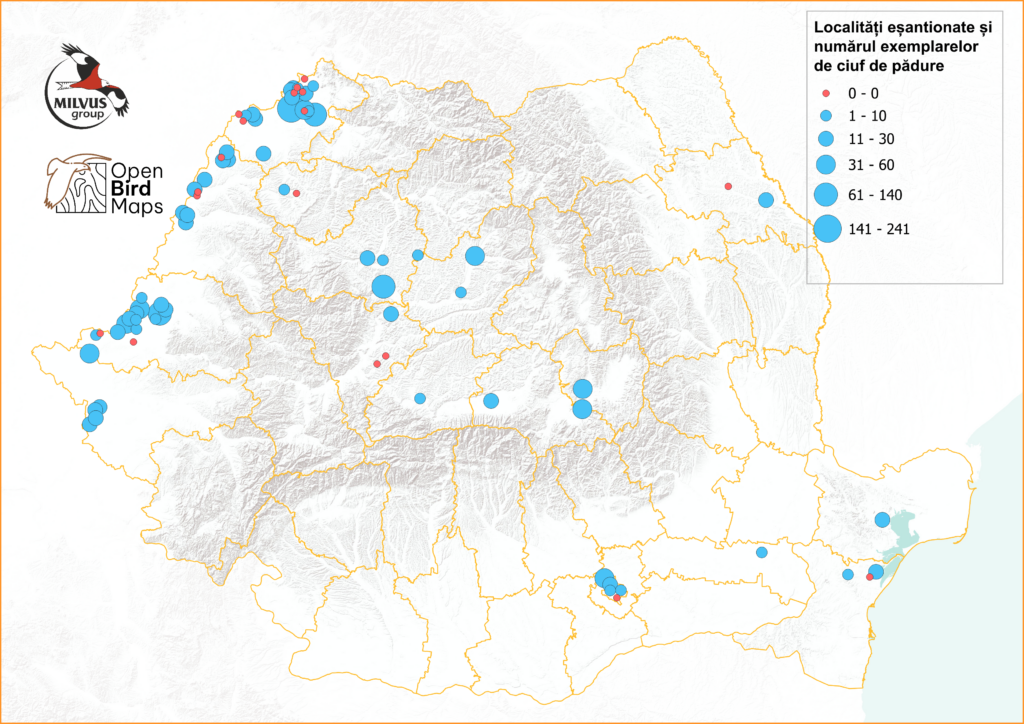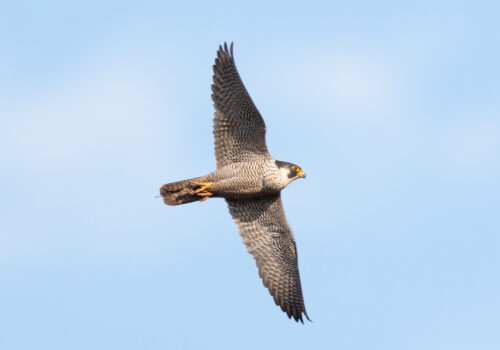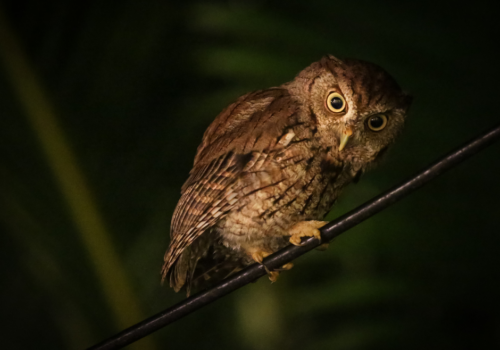For more than 10 years, we have been ending the year and starting the new one by monitoring Long-eared owls in their wintering sites. This means that between 20 December 2024 and 31 January 2025, with the help of volunteers, we visit known roosts and count the observed individuals. Every three years, we extend this effort beyond the usual sites, conducting a full survey of these localities to identify new owl roosting places.
This year was no exception. 41 volunteers recorded observations in 63 localities across 16 counties. Participants identified 58 active colonies, counting a total of 1,408 Long-eared owls.
Unfortunately, year after year, we are counting fewer owls at the roosts. One reason is undoubtedly the mild weather, while another increasingly concerning factor is the cutting down of trees used as shelter. Last year, we reported the disappearance of three major gathering sites in Bihor County due to tree felling. Sadly, the same situation occurred this year yet again in Bihor County. In Tarcea, the fir trees from both the Reformed and Orthodox churches’ courtyards, which had been used as wintering spots by owls for many years, were cut down. However, it seems that this colony has relocated to the neighbouring village of Galoșpetru, where we identified a new colony—precisely thanks to our thorough survey carried out every three years.
Until 2022, the city of Satu Mare held the record for the highest number of Long-eared owls. However, in 2023, the village of Turnu (Arad County) took the lead with 241 owls recorded. This year, Satu Mare regained its position at the top, with 162 owls observed within the city as part of the monitoring programme.



































